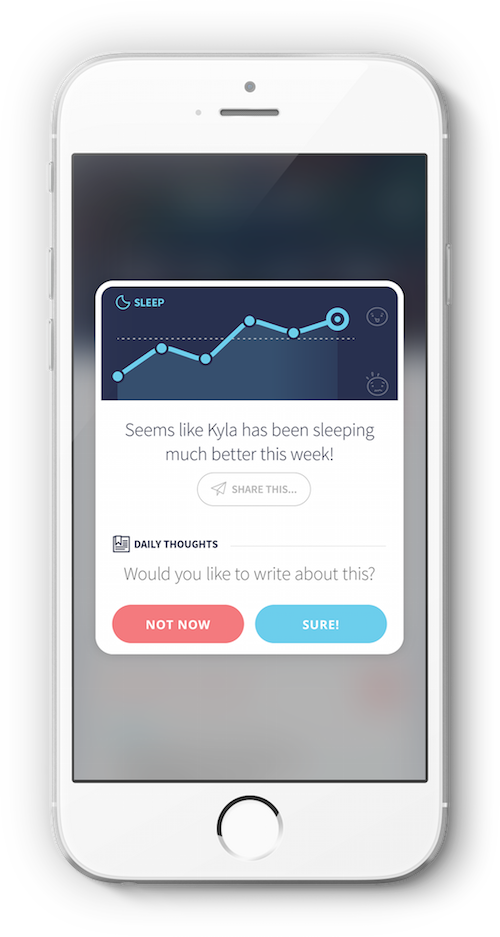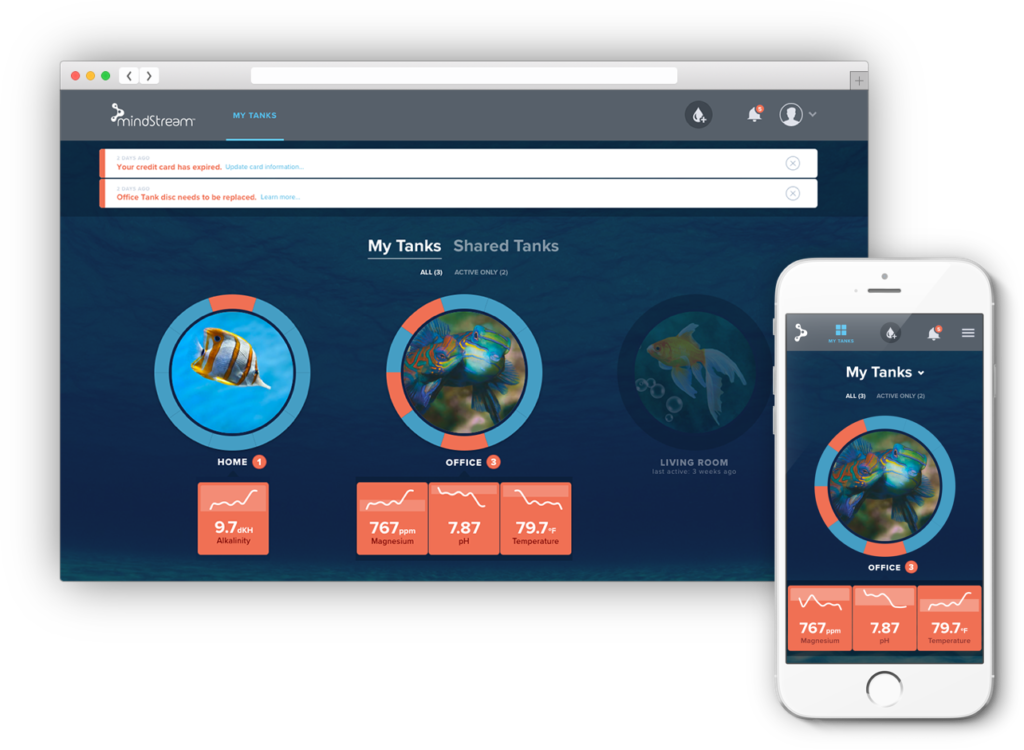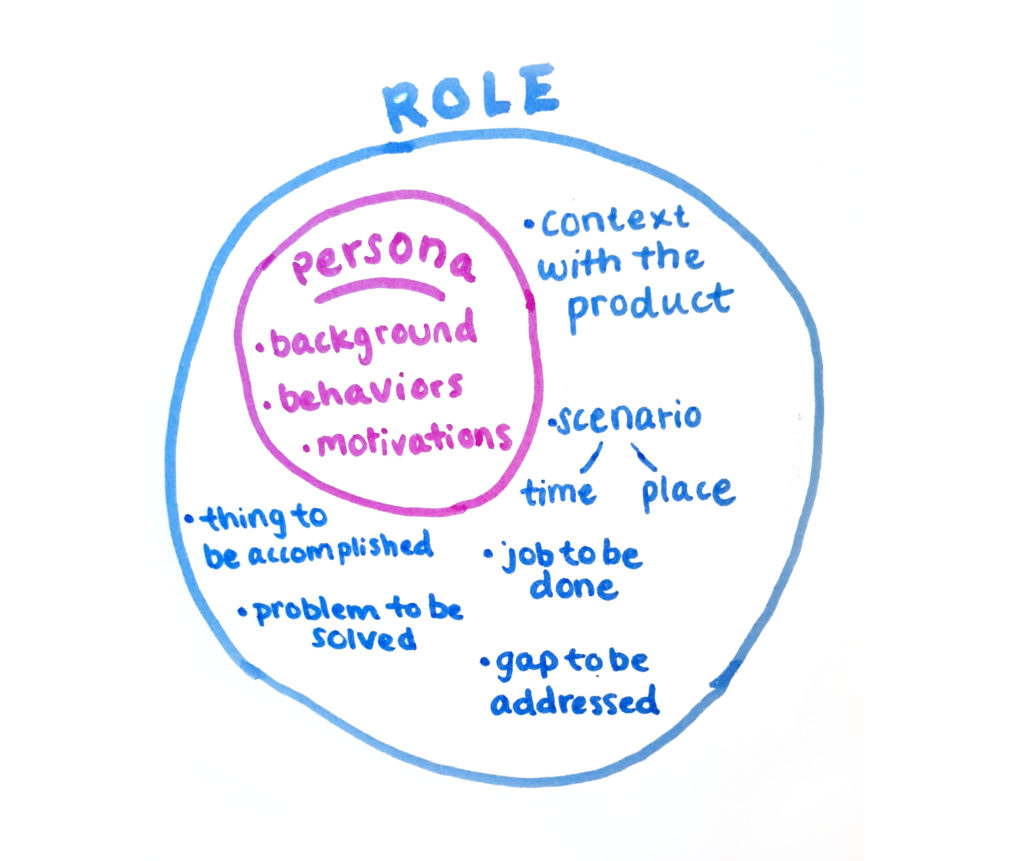
15 Aug User roles vs. personas
If you are in the UX field, you may have heard of both user roles and user personas. But is there a difference between a persona and a role? And if so, which is a better way to frame your UX research?
Personas in Research
In terms of user experience, a persona is a profile that describes a segment of a product’s target user base. It accounts for demographics, behaviors, motivations, and background. Traditional marketing and UX research are grounded in defining personas.
In marketing, personas are used to help the marketer deliver a message that connects with someone on an abstract level, tapping into their emotions or aspirations. In UX research, the goal is to understand how best to design an experience that helps the target user solve a particular problem. Check out this article in UX Booth for a deeper dive into this distinction.
Roles Vs. Personas
We prefer to think of user research in terms of user roles. A role frames what an individual is trying to accomplish within a particular context. For example, maybe the user role is a nurse whose task is to quickly log a patient’s vitals before they can see the doctor.
Attributes such as time management, stress, or multitasking ability are aspects of a persona that we might take into account during our discovery process. Maybe the nurse is pressed for time because there are a lot of patients to process.
Personas are still defined in our research process at GroupVisual.io, but we approach them differently than a marketer. Our motivation to stay agile significantly outweighs the need for lengthy research. Sure, you may have a cat that you love, and like walks on the beach and James Taylor music, but how relevant is that to what you are trying to accomplish in whatever role you are in currently?
Focusing on roles acknowledges that a person plays many roles in their life. Think about it — you are a different person, with different goals, when you are working out in the gym, trying to write an essay, or playing backgammon with a friend.
What’s Important?
Framing an individual within a particular role helps us focus on what they are trying to accomplish — their goals and challenges — within the context of the application we are designing. For us, the most important considerations are the task at hand, and the motivations of our user.
We design a UX that sets our user on a path to accomplish the given task from the moment they start using the software. This concept, called the JTBD framework (“Jobs to be done framework”), is part of our research and discovery. By defining the jobs to be done, we can better understand their motivations.
Motivations can depend on context. One way to illustrate this is to look at Bartle’s taxonomy of player types, shown below. This model describes the different ‘roles’ one plays in the context of a video game, but the concept can be broadened to any experience. Part of our job as designers is to figure out which ‘player’ type is best suited for the experience we are designing. We find the easiest means to the end they desire.
A person who is a competitor when running a 5k race may be a different player type in situations like a classroom or a dinner party. In a classroom, maybe they are an explorer, looking to learn something. And at the dinner party, maybe they are a socializer, simply looking to connect with others and participate in a community.
The User Persona as a Factor of the User Role
Focusing on a role in no way prevents us from considering the whole person, including practical, emotional and motivational factors. Studying the user role helps us focus on the particular factors at play within the context of the UX.
For example, with the Behavior Tracker design, one of our primary considerations was time. The users were busy parents of special needs children, and therefore the UX needed to allow them to log events quickly and easily.
 In the image, the act of logging an event is intended to minimize the amount of work for the user. It also gives them the option to opt out of logging an event if they are pressed for time. Certain aspects of their persona helped us frame a UX that made practical sense for their lifestyle.
In the image, the act of logging an event is intended to minimize the amount of work for the user. It also gives them the option to opt out of logging an event if they are pressed for time. Certain aspects of their persona helped us frame a UX that made practical sense for their lifestyle.
Another example of user role/persona definition was in the Mindstream App design. We were engaged to design an app for a very well-defined group of users, which were aquarists. We spent time interviewing aquarists to get a sense of what was truly important to them in managing their tanks.
 One design takeaway we gained from getting to know our users was that they wanted the experience to be soothing and enjoyable, as this was a hobby and a relaxing pass time for many of them. This consideration factored into the visual design of the app.
One design takeaway we gained from getting to know our users was that they wanted the experience to be soothing and enjoyable, as this was a hobby and a relaxing pass time for many of them. This consideration factored into the visual design of the app.
 This visual illustrates the idea that the user persona is captured within the user role. The items inside the outer circle are all considerations we make when we research our user base. When appropriate, we consider factors of their persona such as behavior, motivations, background, or other factors that don’t encompass their direct role with the product.
This visual illustrates the idea that the user persona is captured within the user role. The items inside the outer circle are all considerations we make when we research our user base. When appropriate, we consider factors of their persona such as behavior, motivations, background, or other factors that don’t encompass their direct role with the product.
The driving force behind this concept is time efficiency and design thinking.
We use time wisely by asking the right questions. We research what makes sense given the scope of a project. And design thinking allows us to determine what is practical from a technical and business perspective. From this, we get a well-rounded user role that accounts for any necessary persona traits.

